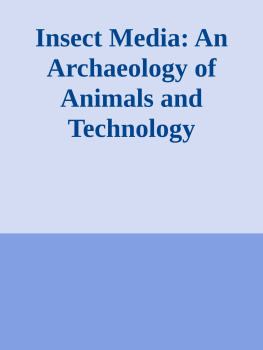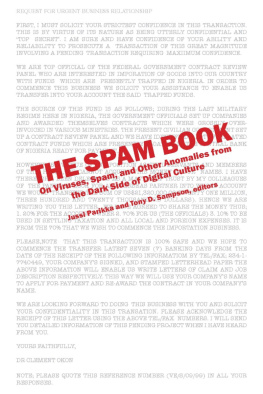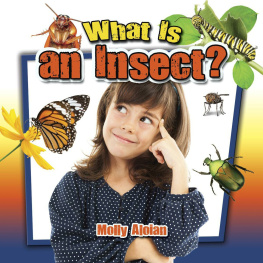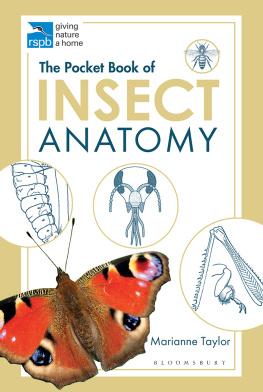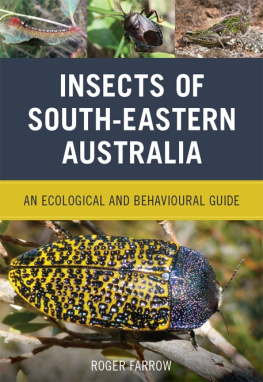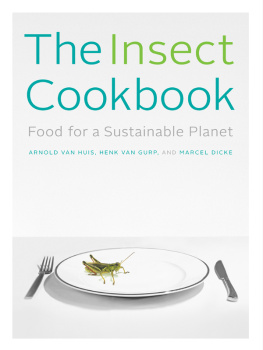
Insect Media
Ca ry Wolfe, Ser i es Editor 11
Insect Media: An Archaeology of Animals and Technology Jussi Parikka
Cosmopolitics II
Isabelle Stengers
Cosmopolitics I
Isabelle Stengers
What Is Posthumanism?
Cary Wolfe
Political Affect: Connecting the Social and the Somatic John Protevi
Animal Capital: Rendering Life in Biopolitical Times Nicole Shukin
Dorsality: Thinking Back through Technology and Politics David Wills
Bos: Biopolitics and Philosophy
Roberto Esposito
When Species Meet
Donna J. Haraway
The Poetics of DNA
Judith Roof
The Parasite
Michel Serres
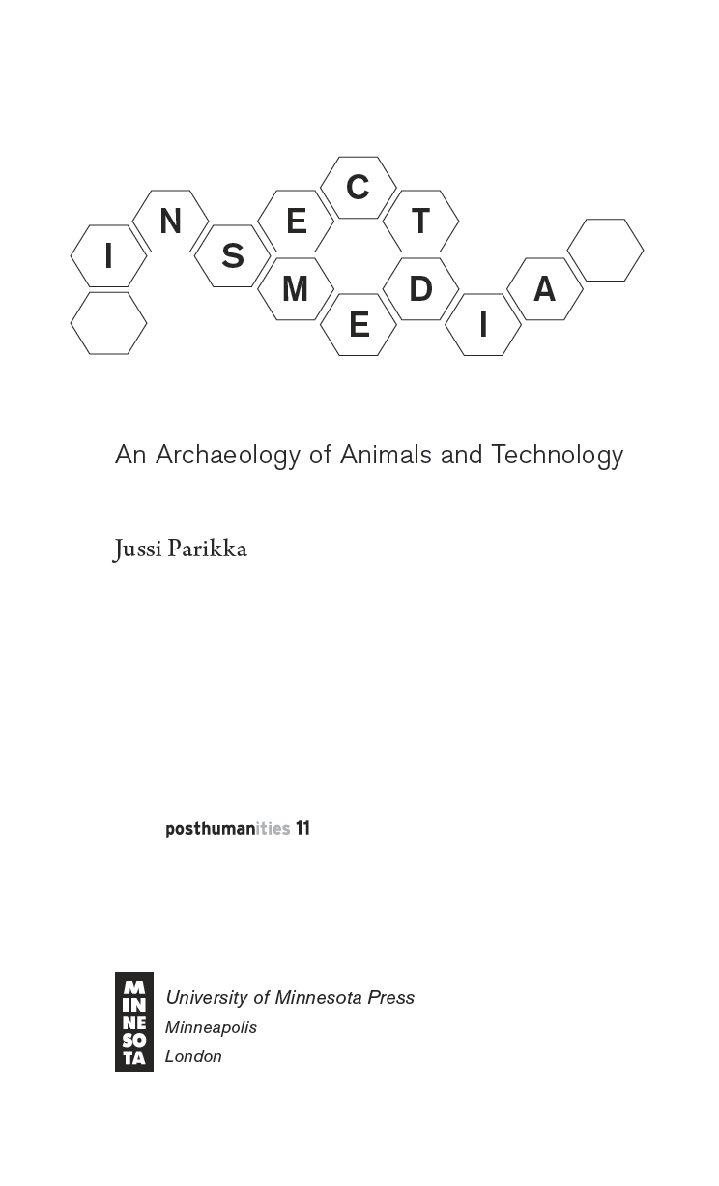
An earlier version of chapter 1 was published as Insect Technics: Intensities of Animal Bodies, in An [Un]Likely Alliance: Thinking Environment[s] with Deleuze/
Guattari, ed. Bernd Herzogenrath (Newcastle: Cambridge Scholars Publishing, 2008), 33962; reprinted with permission of Cambridge Scholars Publishing. Parts of chapter 2 were previously published in Politics of Swarms: Translations between Entomology and Biopolitics, Parallax 14, no. 3 (2008): 11224; permission to reprint is granted by Taylor and Francis, Ltd. Chapter 7 is a revision of Insects, Sex, and Biodigitality in Lynn Hershman-Leesons Teknolust,Postmodern Culture 17, no. 2
(January 2007).
Copyright 2010 by the Regents of the University of Minnesota All rights reserved. No part of this publication may be reproduced, stored in a retrieval system, or transmitted, in any form or by any means, electronic, mechanical, photocopying, recording, or otherwise, without the prior written permission of the publisher.
Published by the University of Minnesota Press 111 Third Avenue South, Suite 290
Minneapolis, MN 55401- 2520
http://www.upress.umn.edu
Library of Congress Cataloging-in-Publication Data Parikka, Jussi, 1976
Insect media : an archaeology of animals and technology / Jussi Parikka.
p. cm. (Posthumanities ; v. 11)
Includes bibliographical references (p. ) and index.
ISBN 978-0-8166-6739-0 (hc : alk. paper) ISBN 978-0-8166-6740-6
(pb : alk. paper)
1. Swarm intelligence. 2. InsectsBehaviormathematical models.
3. Bionics. I. Title.
Q337.3.P36 2010
595.709dc22
2010035074
Printed in the United States of America on acid- free paper The University of Minnesota is an equal- opportunity educator and employer.
17 16 15 14 13 12 11 10
10 9 8 7 6 5 4 3 2 1
CONTENTS
Acknowledgments
vii
INTRODUCTION Insects in the Age of Technology ix
NINETEENTH
CENTURY INSECT TECHNICS
The Uncanny Affects of Insects
GENESIS OF FORM
Insect Architecture and Swarms
TECHNICS OF NATURE AND TEMPORALITY
Uexklls Ethology
METAMORPHOSIS, INTENSITY, AND DEVOURING SPACE
Elements for an Insect Game Theory
Intermezzo
ANIMAL ENSEMBLES, ROBOTIC AFFECTS
Bees, Milieus, and Individuation
BIOMORPHS
AND
BOIDS
Swarming Algorithms
SEXUAL SELECTION IN THE BIODIGITAL
Teknolust and the Weird Life of SRAs EPILOGUE Insect Media as an Art of Transmutation 195
Notes
Index
This page intentionally left blank
ACKNOWLEDGMENTS
Even if I do not particularly enjoy insects, working with this book was a joy. I had already had the chance to work with the underbelly of media theory with my earlier virus-related project and my more recent book on
spam cultures, but Insect Media gave me the opportunity to elaborate and continue theoretical and media archaeological ideas that were giving glimpses of their insectoid faces.
Nothing is possible without creative surroundings and a network of people with both intelligence and instinct who generously offer advice and support. Institutionally, this book started while I was finishing my Ph.D. thesis for the Department of Cultural History at the University of Turku in Finland, and my background in the department is still very much visible in this book. I have an obsession to historicize, although I never felt like being a proper historian. I thank warmly many former colleagues and the excellent e-library collections that allowed me to find quirky sources from the nineteenth century (and earlier) and that supported me in my academic perversions. Via the Department of Media Studies, Humboldt University, Berlin, I moved to Anglia Ruskin University in Cambridge, where innovative colleagues ensured a good working atmosphere while I adjusted to the peculiarities of the British higher education system. A warm thank you to all of you who made me feel welcome and offered support with this project.
vii
viii
Acknowledgments
While Anglia Ruskins Department of English, Communication, Film, and Media was my primary everyday context, through a range of other people and institutions I was able to obtain important feedback and tips that (in)formed my budding ideas into a book. In no particular order, I thank Milla Tiainen, Pasi Vliaho, Katve-Kaisa Kontturi, Ilona Hongisto, Teemu Taira, Olli Pyyhtinen, Matthew Fuller, Michael Goddard, Joss Hands, Sean Campbell, Eric Kluitenberg, Charlie Gere, Seb Franklin, Thomas Elsaesser, Jukka Sihvonen, Trond Lundemo, Juri Nummelin, Erkki Huhtamo, Alan Winfield, Craig Reynolds, Steven Shaviro, Tony D. Sampson, Floris Paalman, Lynn Hershman-Leeson, Garnet Hertz, Gary Genosko, Tina Kendall, Tanya Horeck, and Sarah Barrow. I hope I did not forget too many; as always, there is a swarm.
Without the supportive feedback of Douglas Armato at the University of Minnesota Press and Cary Wolfes supportive and perceptive role as the series editor for Posthumanities, I would have been lost. Thanks also to Danielle Kasprzak for responding to my endless questions so promptly. I also thank the anonymous referees for critical but affirmative and encouraging comments.
Financially, I thank the Finnish Cultural Foundation for a six-month research grant during the early phases of research.
A special and warm thank you goes as always to Milla: we hate insects and spiders together but love things material, not least cultural theory.
INTRODUCTION
Insects in the Age of Technology
... cultural and technical phenomena providing a fertile soil, a good soup, for the development of insects, bacteria, germs, or even particles. The industrial age defined as the age of insects....
Gilles Deleuze and Flix Guattari, A Thousand Plateaus There is an entire genealogy to be written from the point of view of the challenge posed by insect coordination, by swarm intelligence. Again and again, poetic, philosophical, and biological studies ask the same question: how does this intelligent, global organization emerge from a myriad of local, dumb interactions?
Alex Galloway and Eugene Thacker, The ExploitFROM CYBORGS TO INSECTS
First, a practical exercise. Pick up an entomology book; something such as Thomas Eisners For the Love of Insects from a couple of years back will do fine, or an older book from the nineteenth century, like John Lubbocks On the Senses, Instincts, and Intelligence of Animals with SpecialReference to Insects (1888) suits the purpose as well. However, do not read the book as a description of the biology of those tiny insects or solely as an excavation of the microcosmic worlds of entomology. Instead, if you approach it as media theory, it reveals a whole new world of sensations, perceptions, movements, stratagems, and patterns of organization that work much beyond the confines of the human world.
Next page
